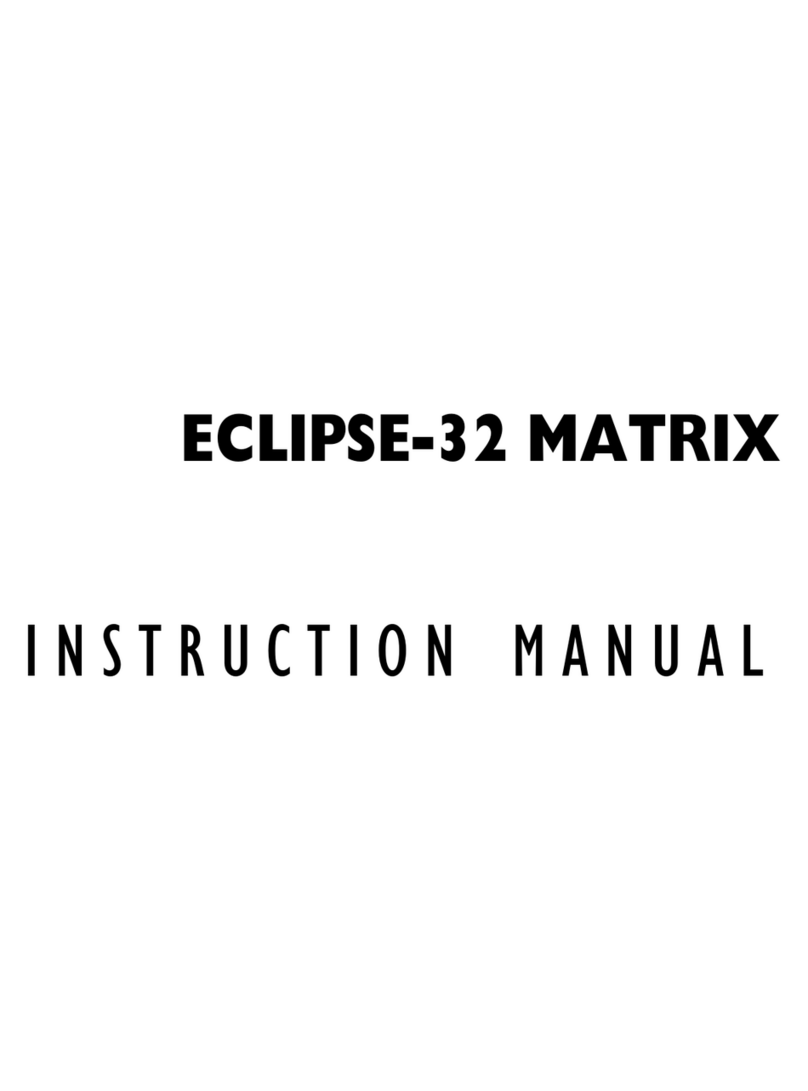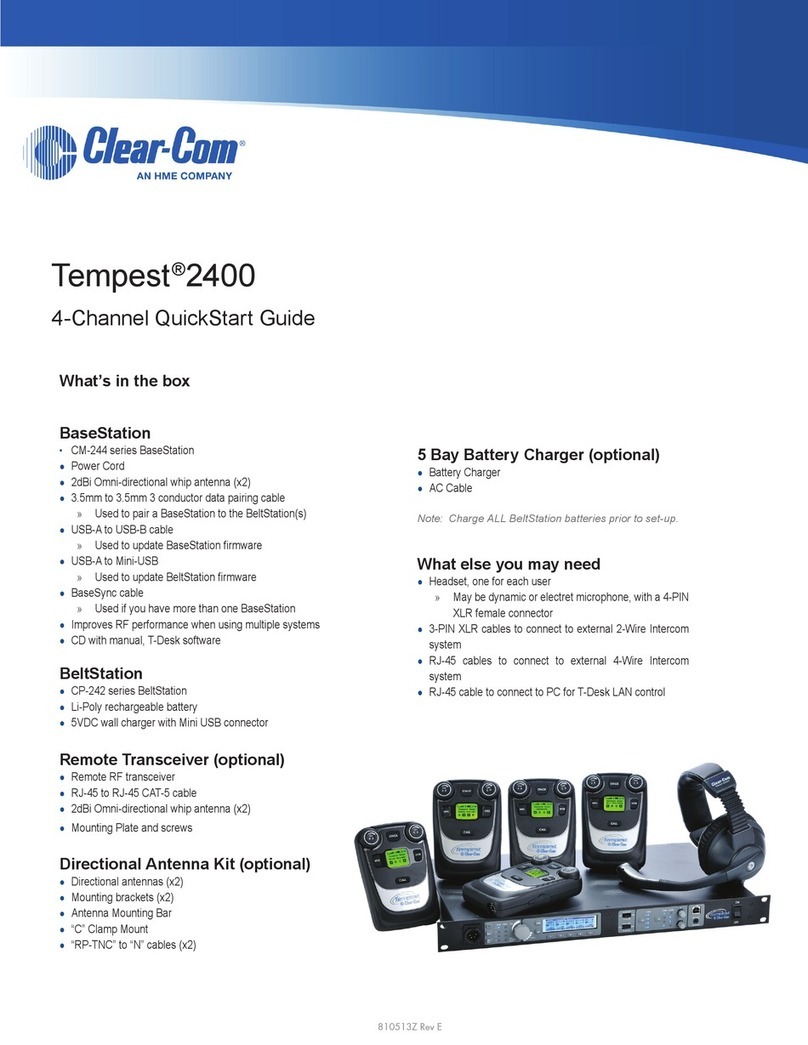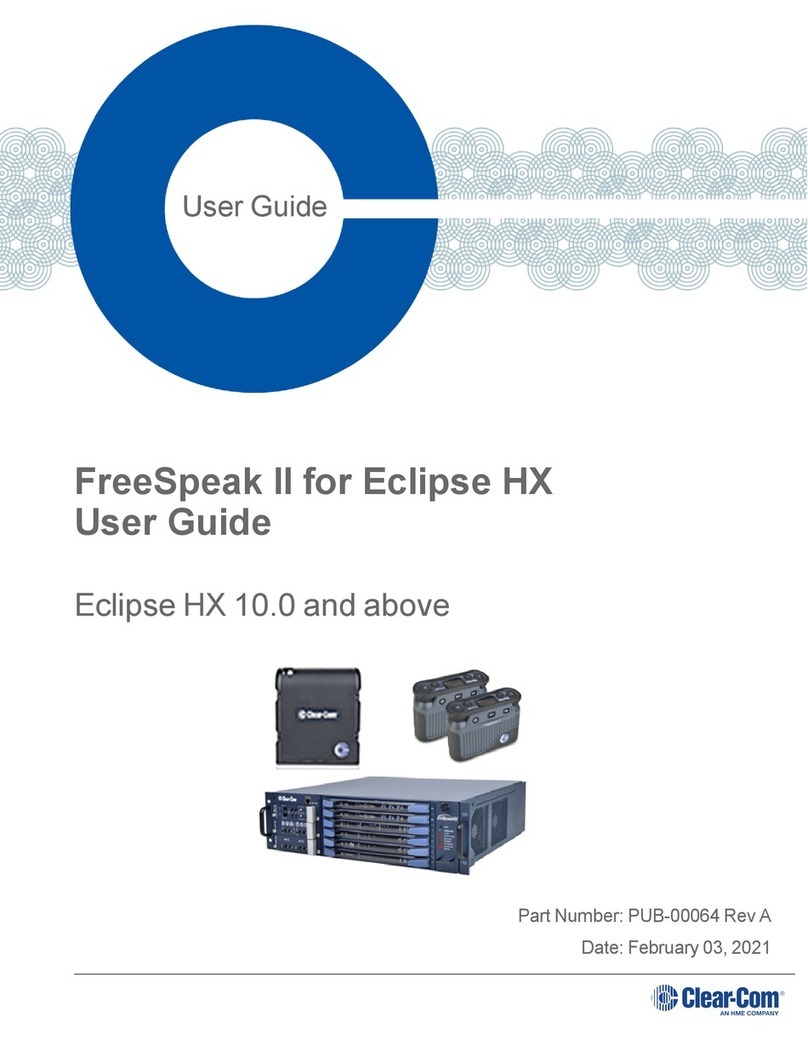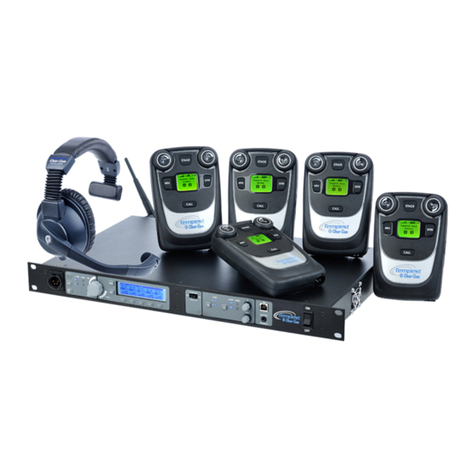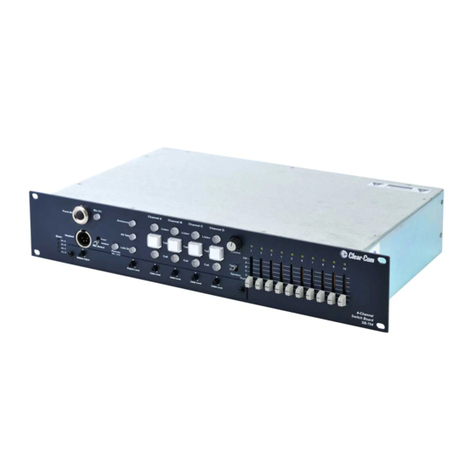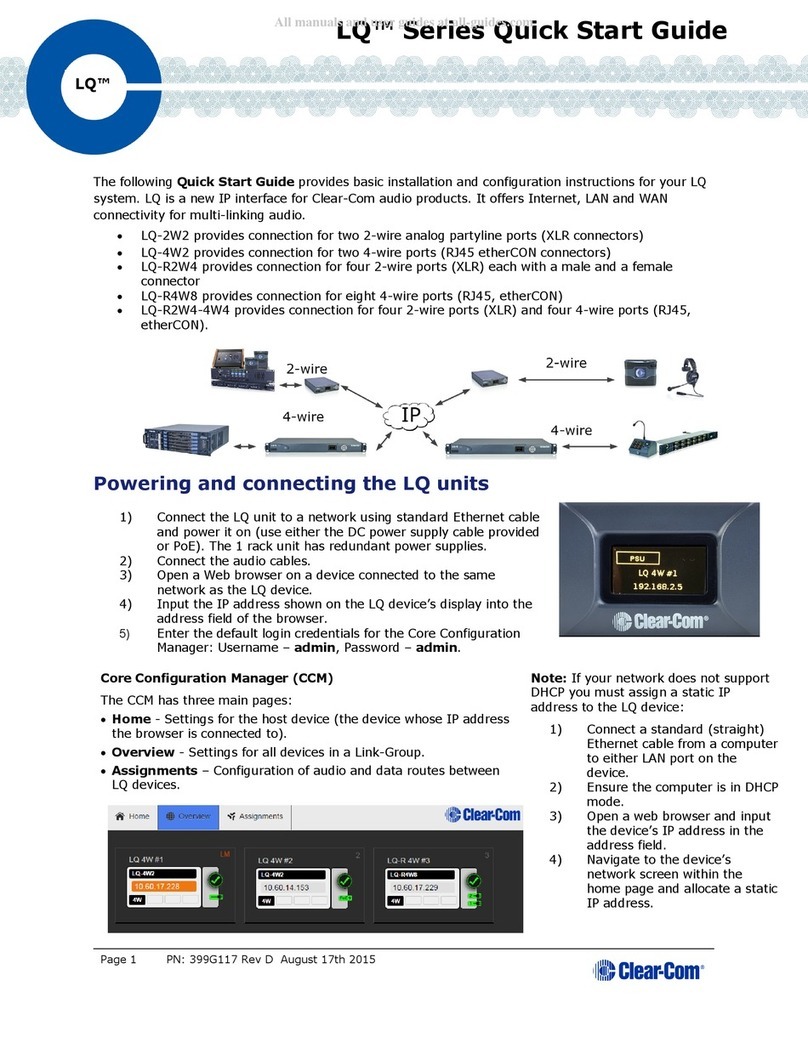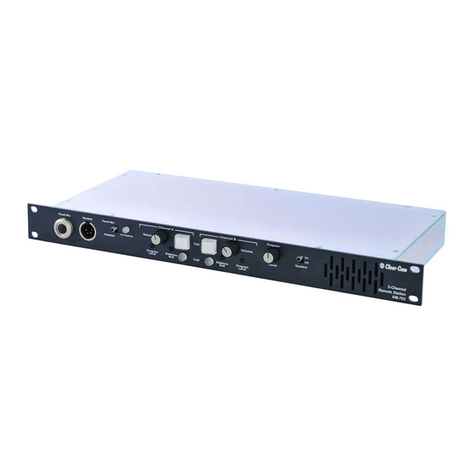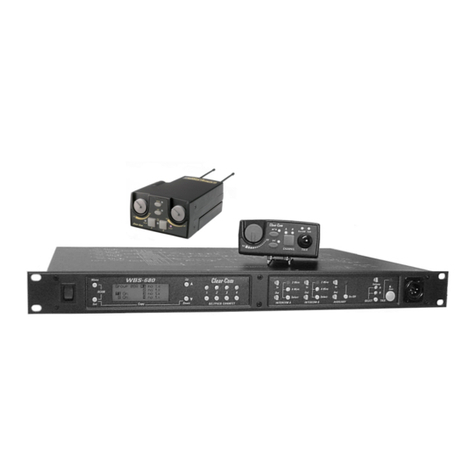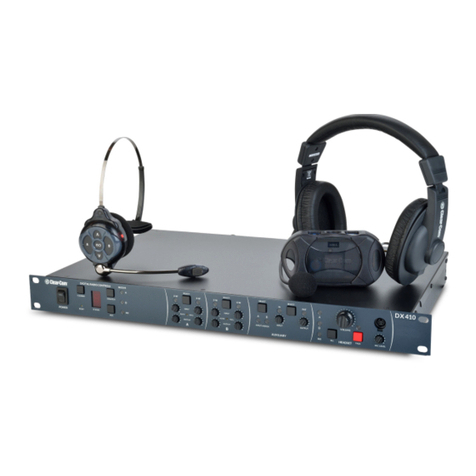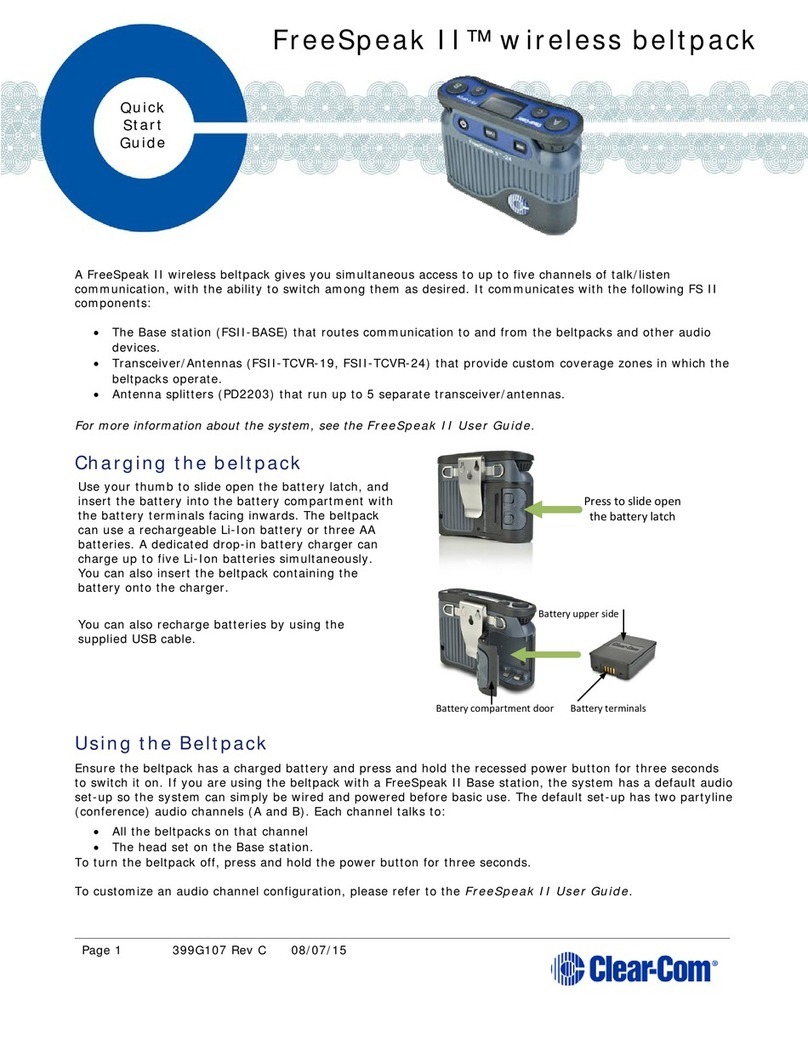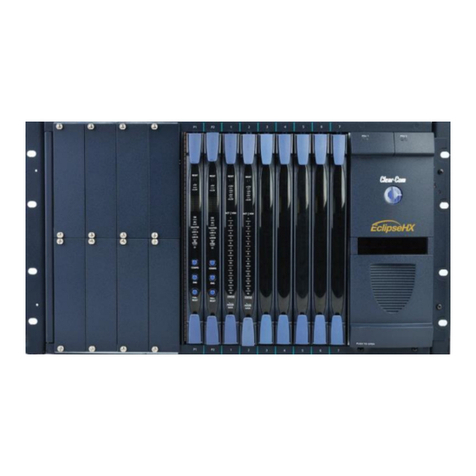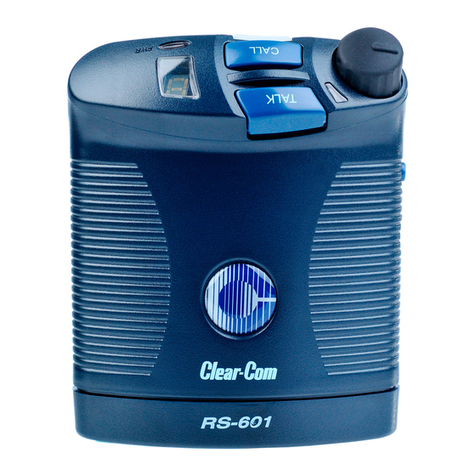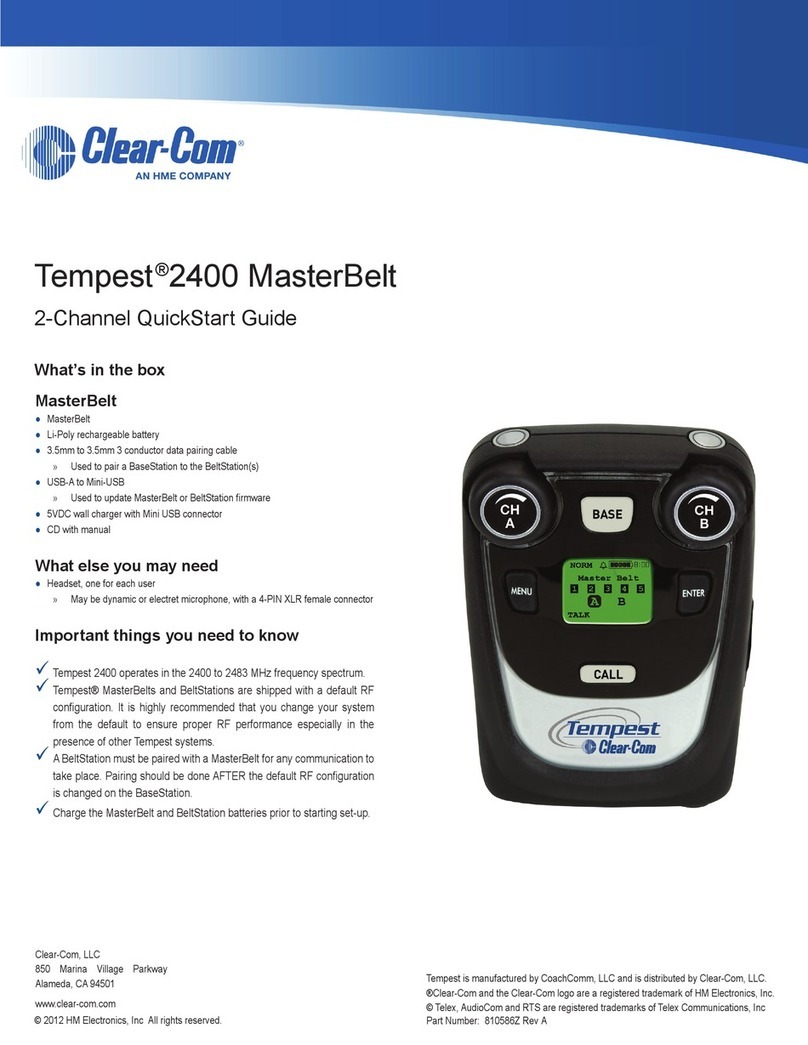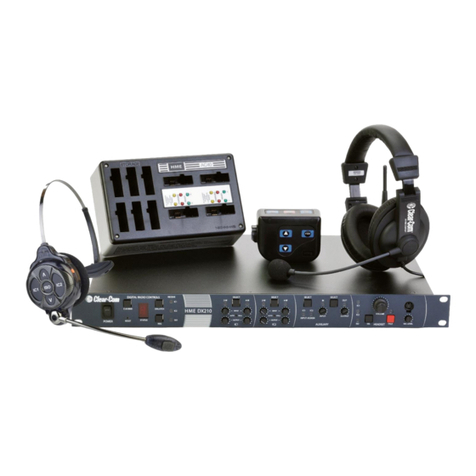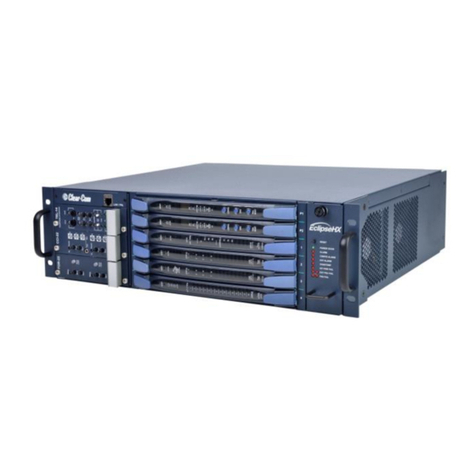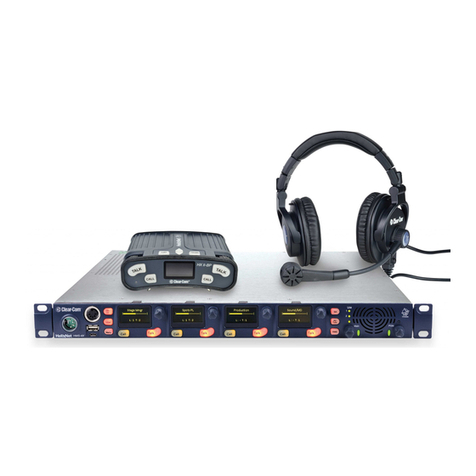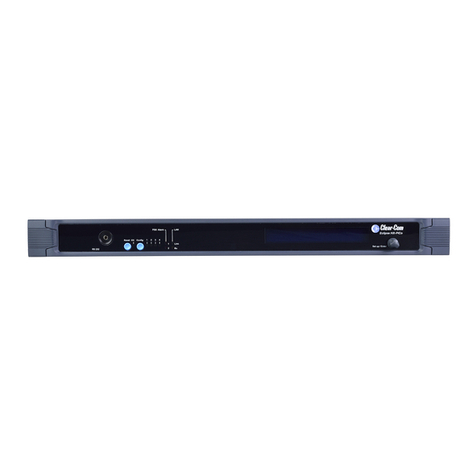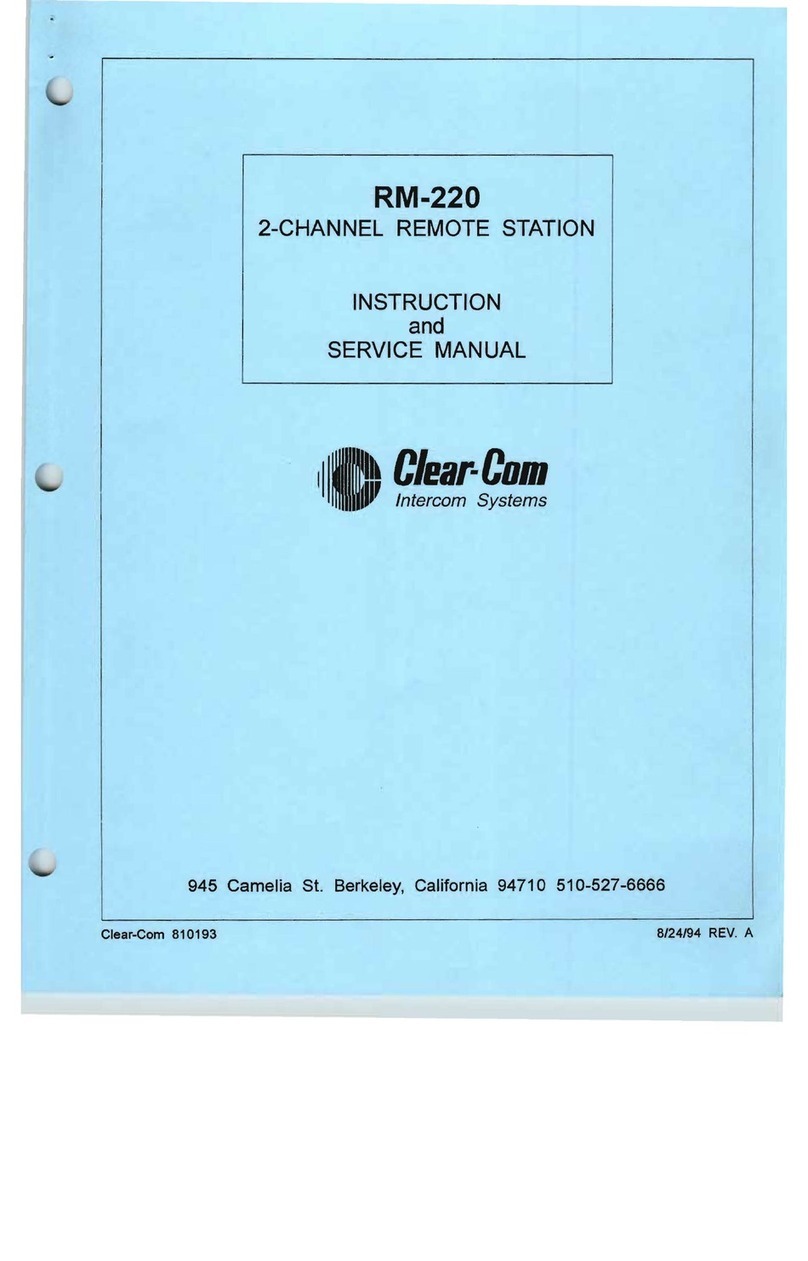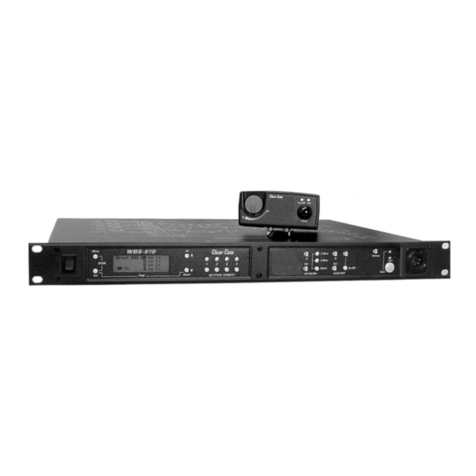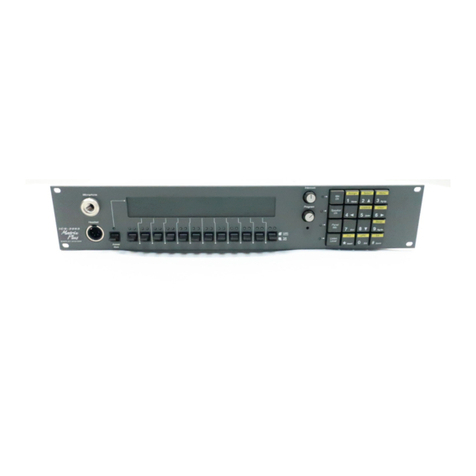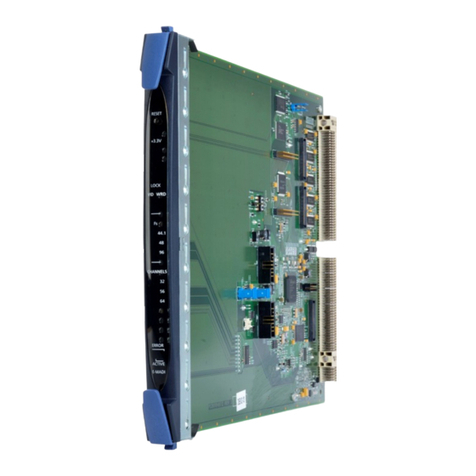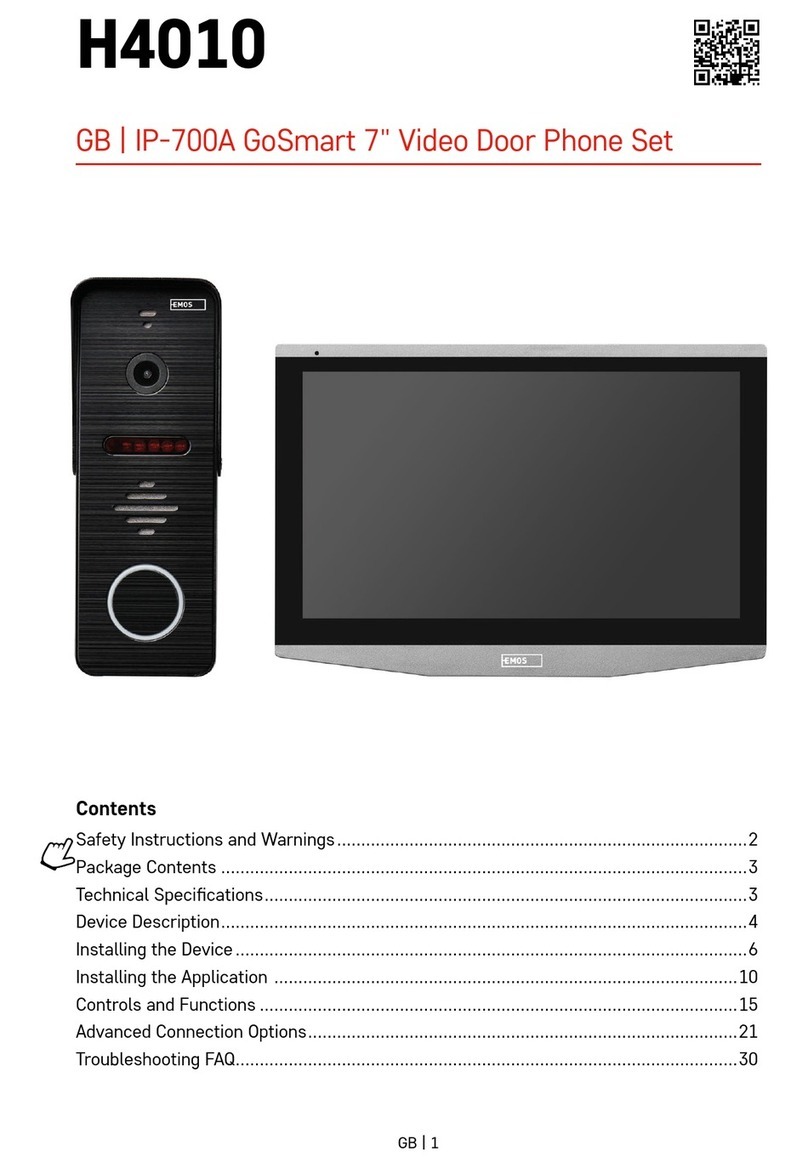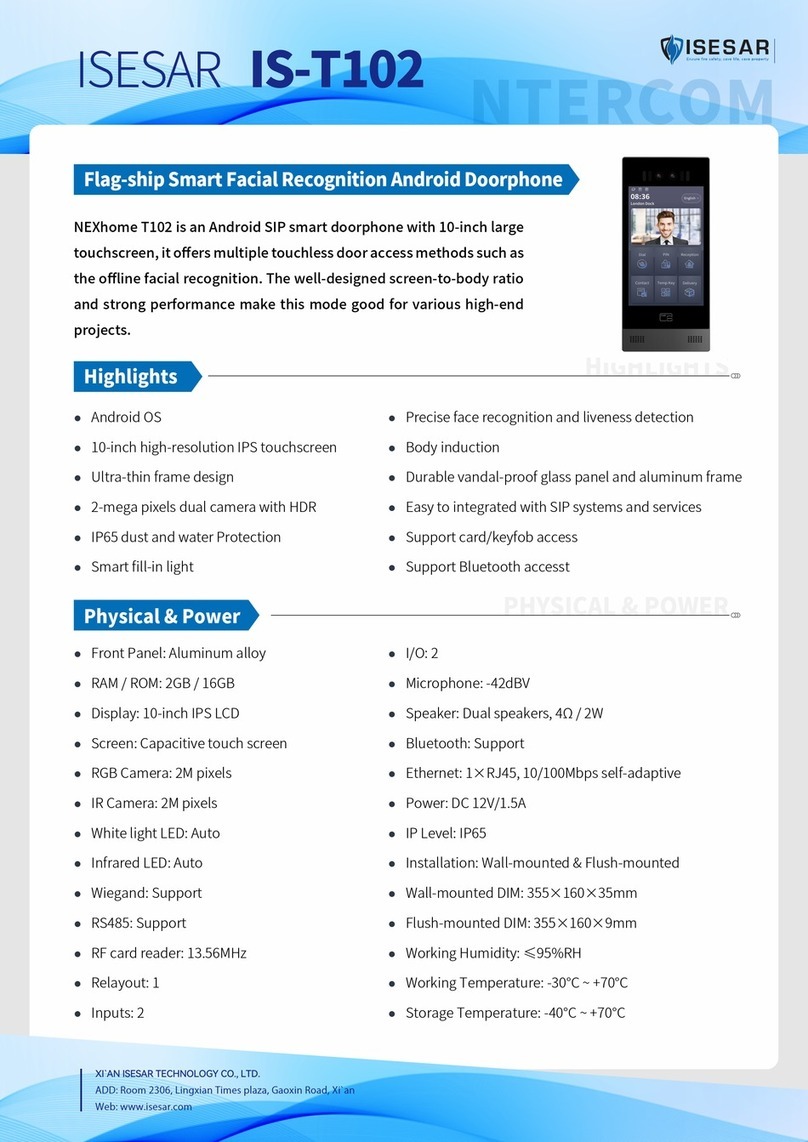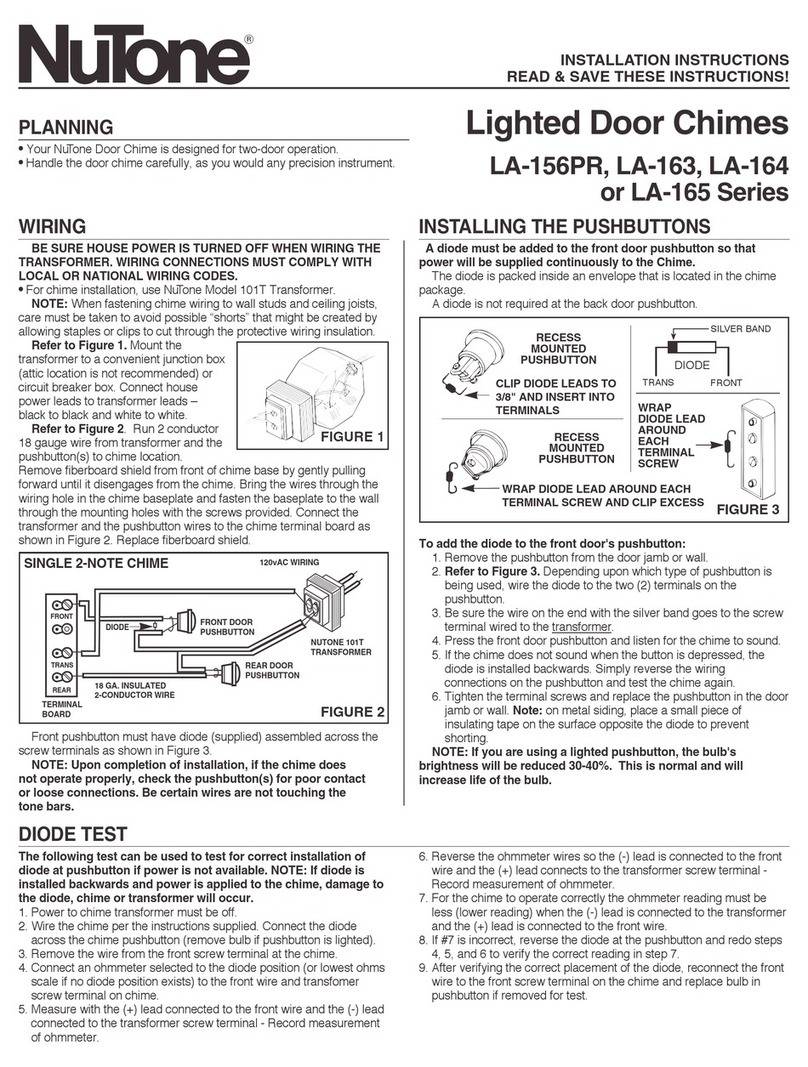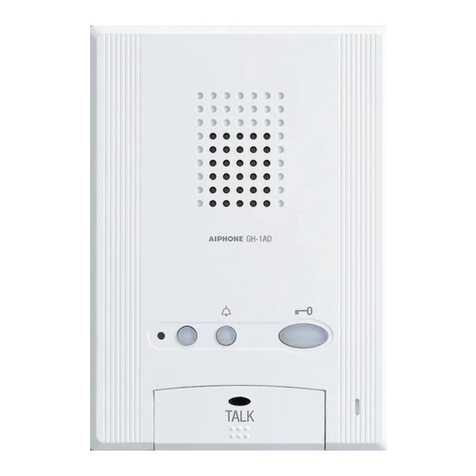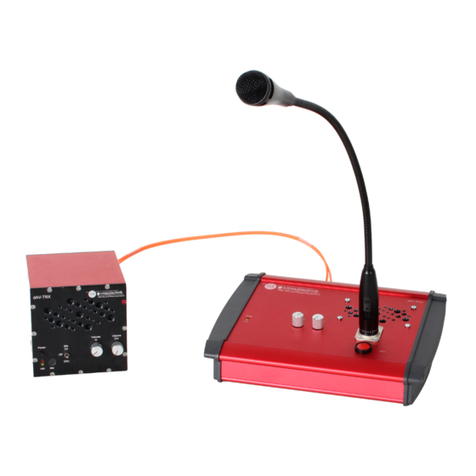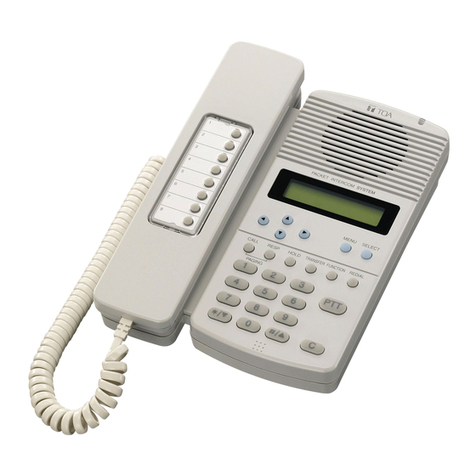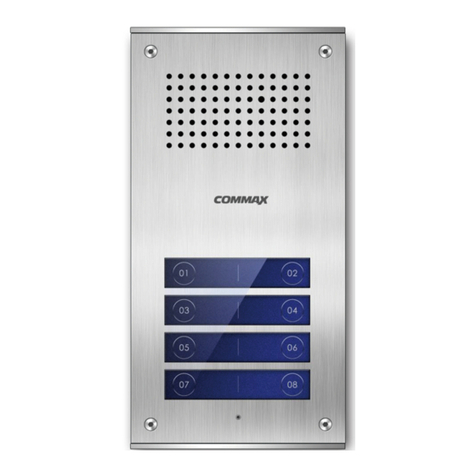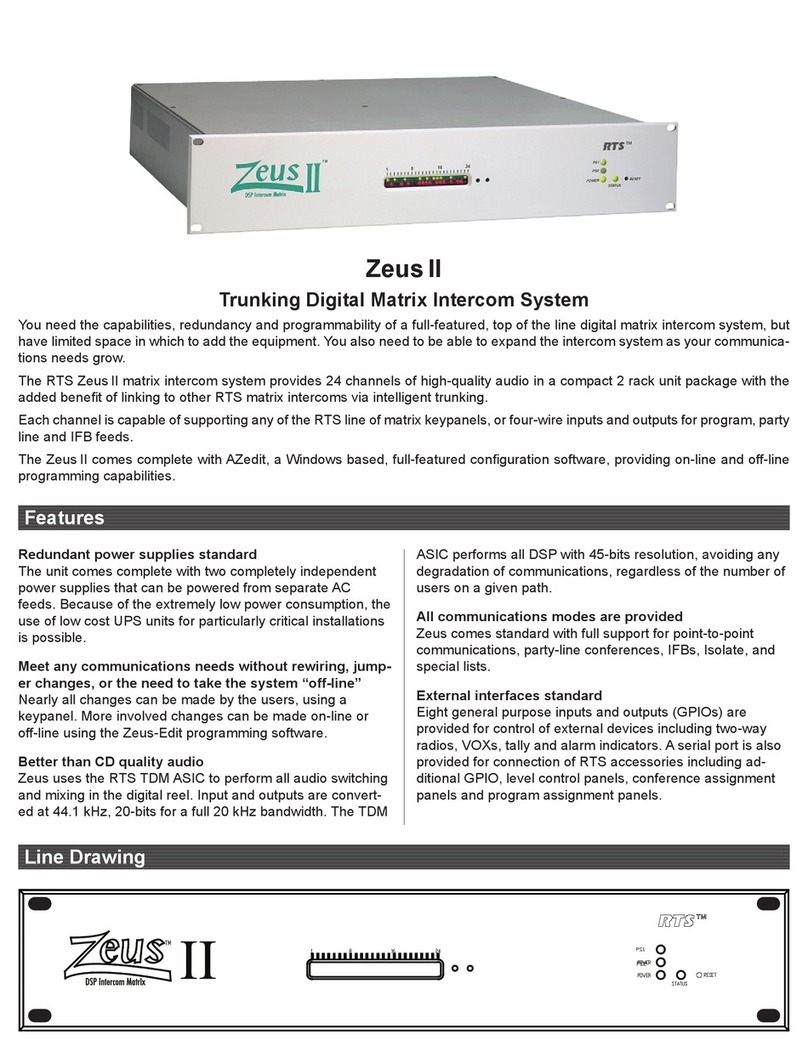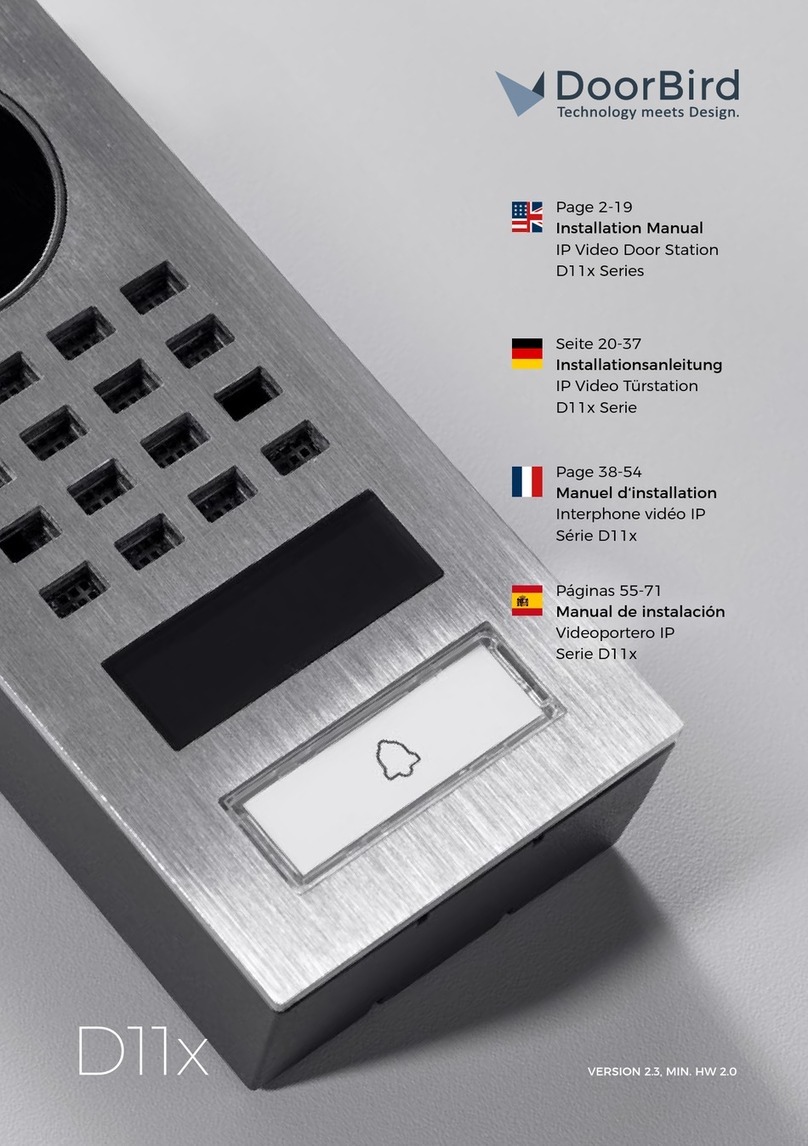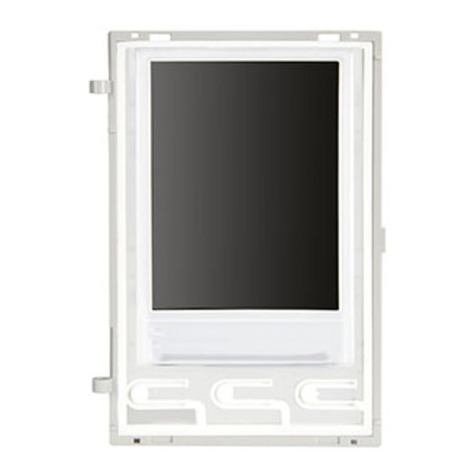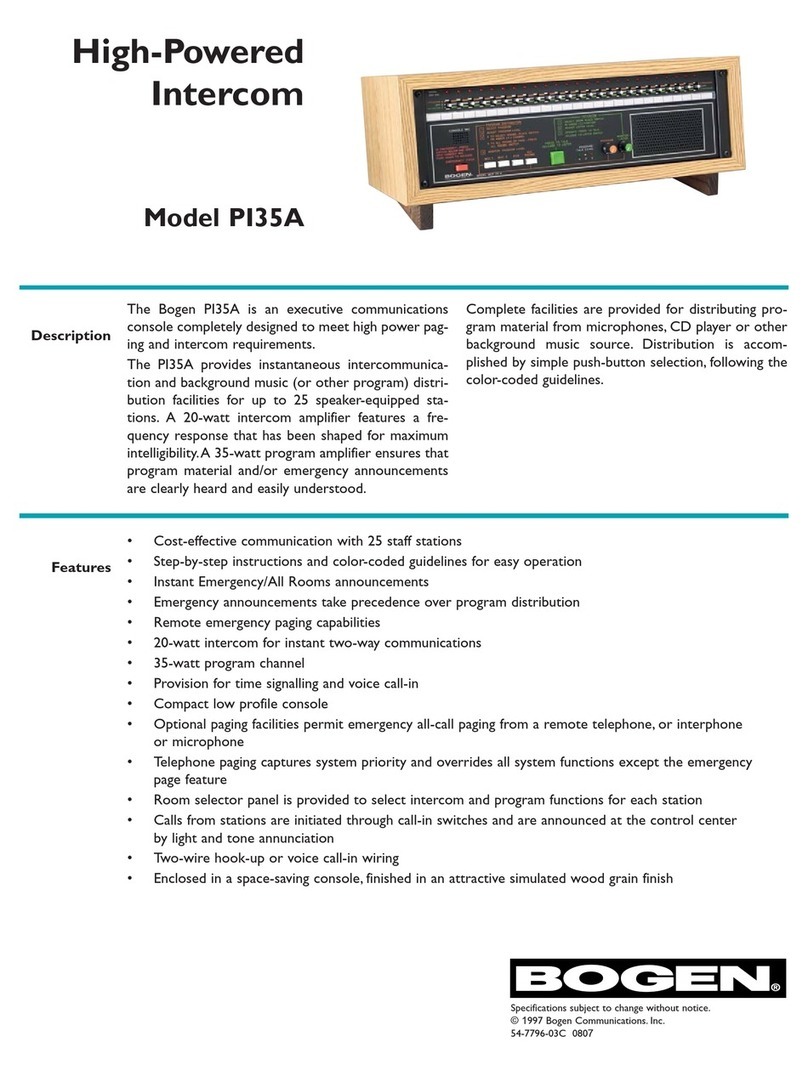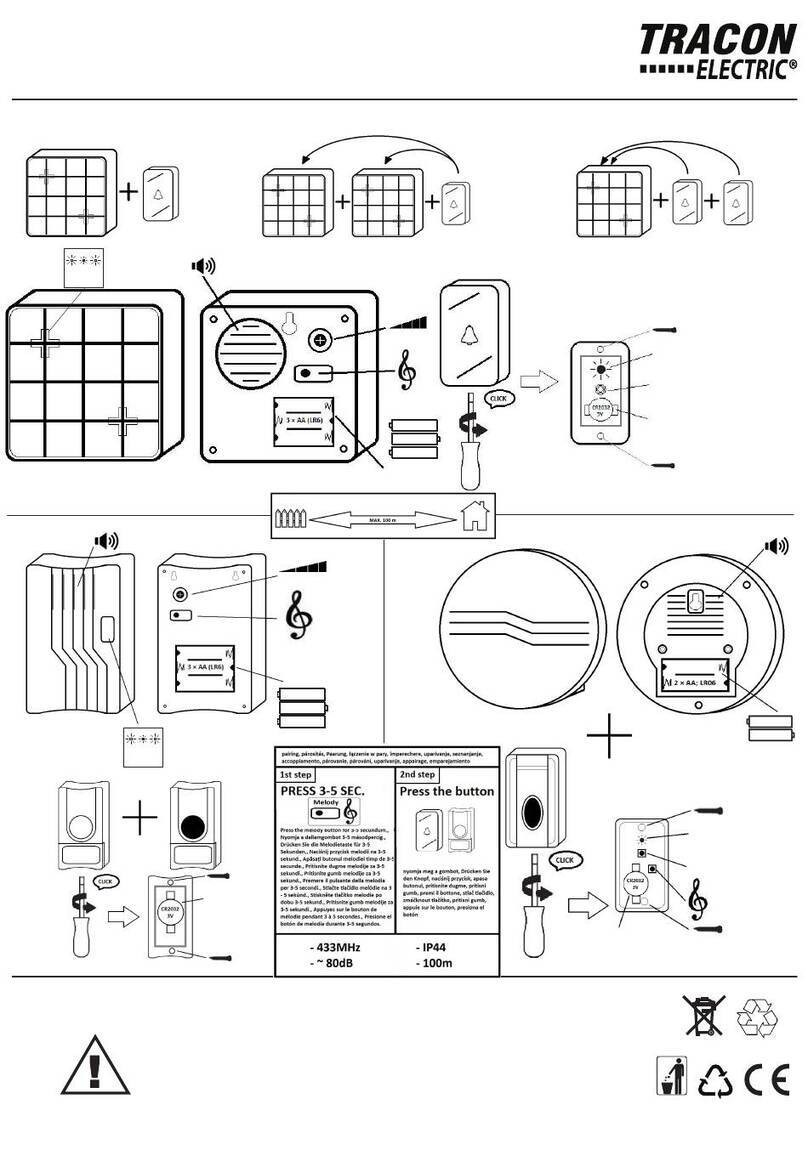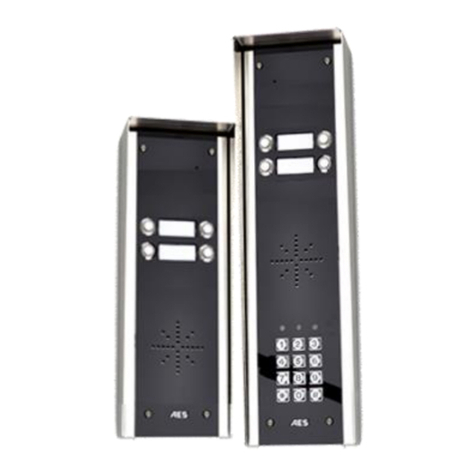other cable can result in markedly shorter distances of cable runs and other
possibly other performance problems.
3.3 Connecting to transceiver/antennas
3.3.1 Connecting one transceiver/antenna directly to a
transceiver port
A transceiver/antenna connects to the transceiver port on the E-Que card using a
standard 4-pair CAT-5 data cable with RJ-45 connectors. It may be located up to
1,000 metres from the matrix if 24AWG cable is used or for 500 metres if 26AWG
cable is used creating a coverage area for five FS-BP wireless beltpacks in that
location.
Note: It is recommended that shielded CAT-5 cable or better is used.
To know that a transceiver/antenna is active, observe the green power LED and
the yellow signal LED on the face of the unit where the RJ-45 connector is
connected. Both must be lit. Also, wireless beltpacks in the vicinity of the active
transceiver/antenna will be connected to the system and their displays will show
labels and other information.
For the best, most reliable coverage, it is advisable to use a minimum of two
transceiver/antennas in any installation, positioned in different locations in the
coverage area. When more antennas are required to support a larger coverage
area or more wireless beltpacks, an antenna splitter will need to be introduced.
In some situations, particularly in outdoor venues, interference from non-DECT
sources can severely reduce the range of the system. In these cases we
recommend a site survey as described in Chapter 8, “Installing a System”.
3.3.2 Connecting transceiver/antennas with a splitter
(PD2203)
A splitter (PD2203) will connect up to five transceiver/antennas to one of the
transceiver ports on the E-Que card, creating up to five coverage zones that can
be overlapped to make large areas where beltpacks can have continuous
coverage. The use of the splitter also extends the distance that the transceiver
antennas can be located from the matrix to 2,000 metres (6,400 feet) if 24AWG
cable is used or 1.000 metres (3,200 feet) if 26AWG cable is used (assuming the
same cable type is used to connect the antenna to the splitter and the splitter to
the matrix).
Note: It is recommended that shielded CAT-5 cable or better is used.
For example, a splitter can be used to connect to a matrix that is located in a
production truck outside an arena or stadium, with a single CAT-5 cable going to
the splitter which is then located just inside the stadium. From that splitter, up to




















